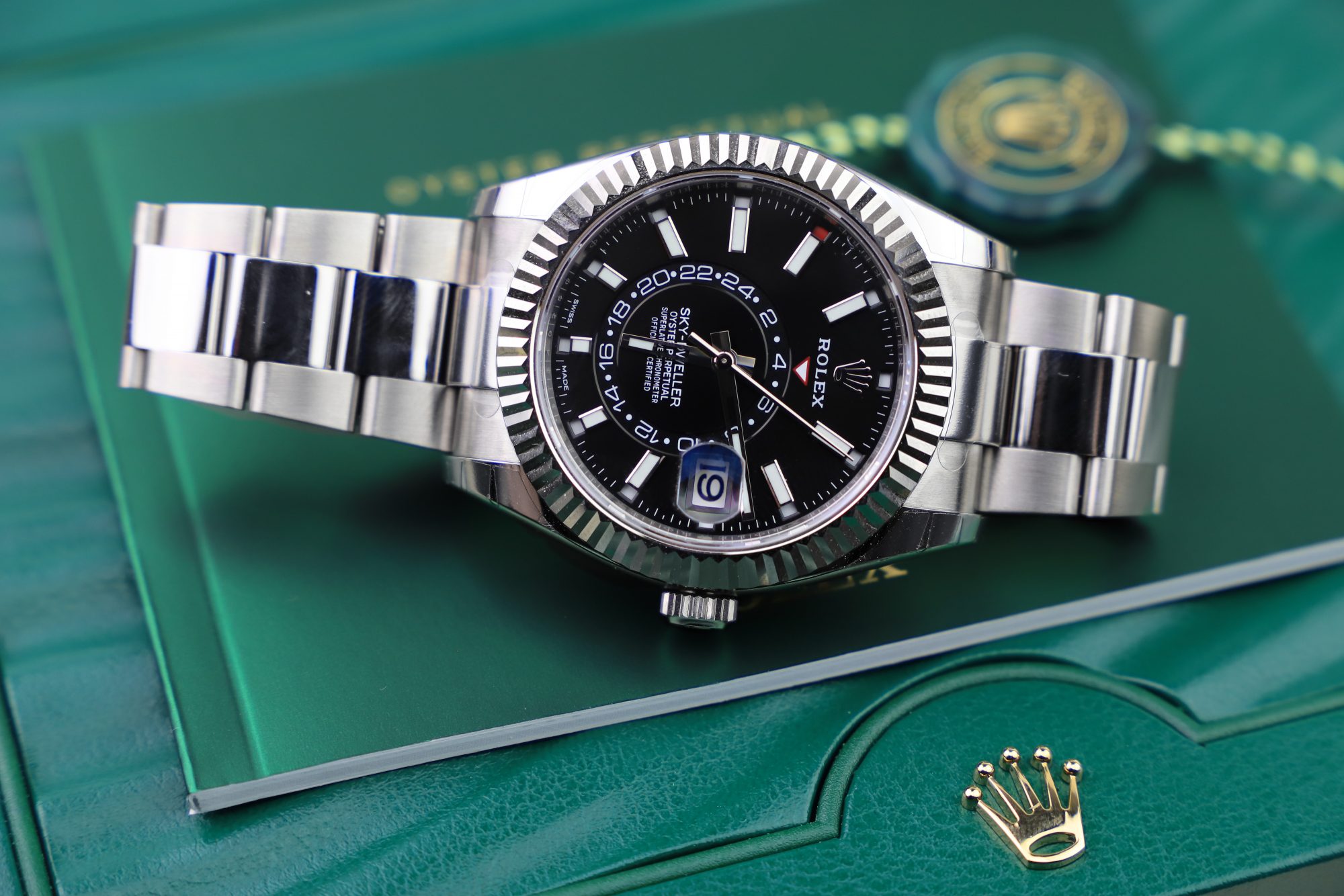
Rolex Sky-Dweller In Stainless Steel Complete Guide
The Rolex Sky-Dweller is a watch that has an impressive set of technology and advanced mechanical functions. It is Rolex’s most complicated timepiece, together with the Yacht-Master II, and when it was launched in 2012, it was only available in precious metals.
The fact that the Sky-Dweller was only available in precious metals, made entering the Sky-Dweller territory quite expensive. The Everose gold version on the leather strap, for example, lists at around 35K Euros, and the full white gold version at around 40K Euros. Because of this, the Sky-Dweller wasn’t made in any large numbers, making it quite an uncommon model.
Until 2017 that is…
In 2017, Rolex did something very unexpected and perhaps even slightly controversial. At Baselworld that year, Rolex announced that the Sky-Dweller would now be available in stainless steel (or more correctly Rolesor – their term for the mixtures of steel with white or yellow gold). Making it available in stainless steel meant making the Sky-Dweller a whole lot more accessible.
Compared to the prices of the gold version mentioned above, the stainless steel Sky-Dwellers cost less than half the price.
The Rolex Sky-Dweller in Stainless steel has the reference number 326934 and this is the watch we are going to look closer at in this article.
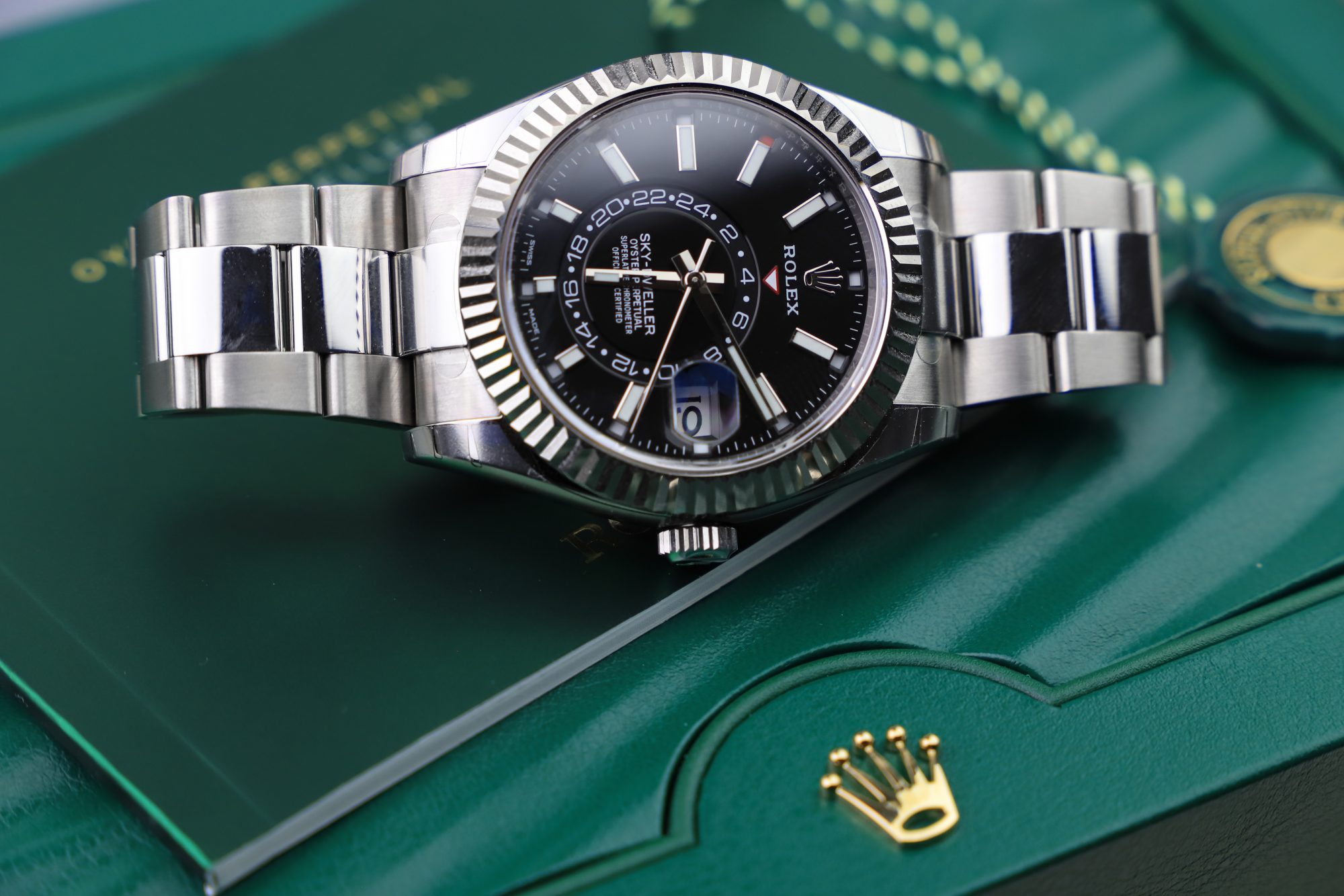
Rolex Sky-Dweller complications
For a lot of people, the fact that Rolex released a Sky-Dweller in stainless steel came as a surprise. One of the most advanced movements in production by Rolex, combined with a full gold case, made this watch a top-tier watch in Rolex’s collection.
But imagine the time and resources demanded to develop the Sky-Dweller movement. As the margins for gold watches are higher than on steel, Rolex can get its money back for research and development. But at the same time, when you have developed such a complicated caliber, it makes financial sense to produce as many calibers as possible.
And one way to do just that is to make it much more accessible in terms of price. And so Rolex did. And released was the Sky-Dweller in stainless steel.
By releasing it in stainless steel, the number of Sky-Dweller calibers has shot through the roof. While we do not have the official numbers, it wouldn’t be unlikely that Rolex has produced more Sky-Dweller calibers from 2017 and now, than they did between 2012 to 2017.
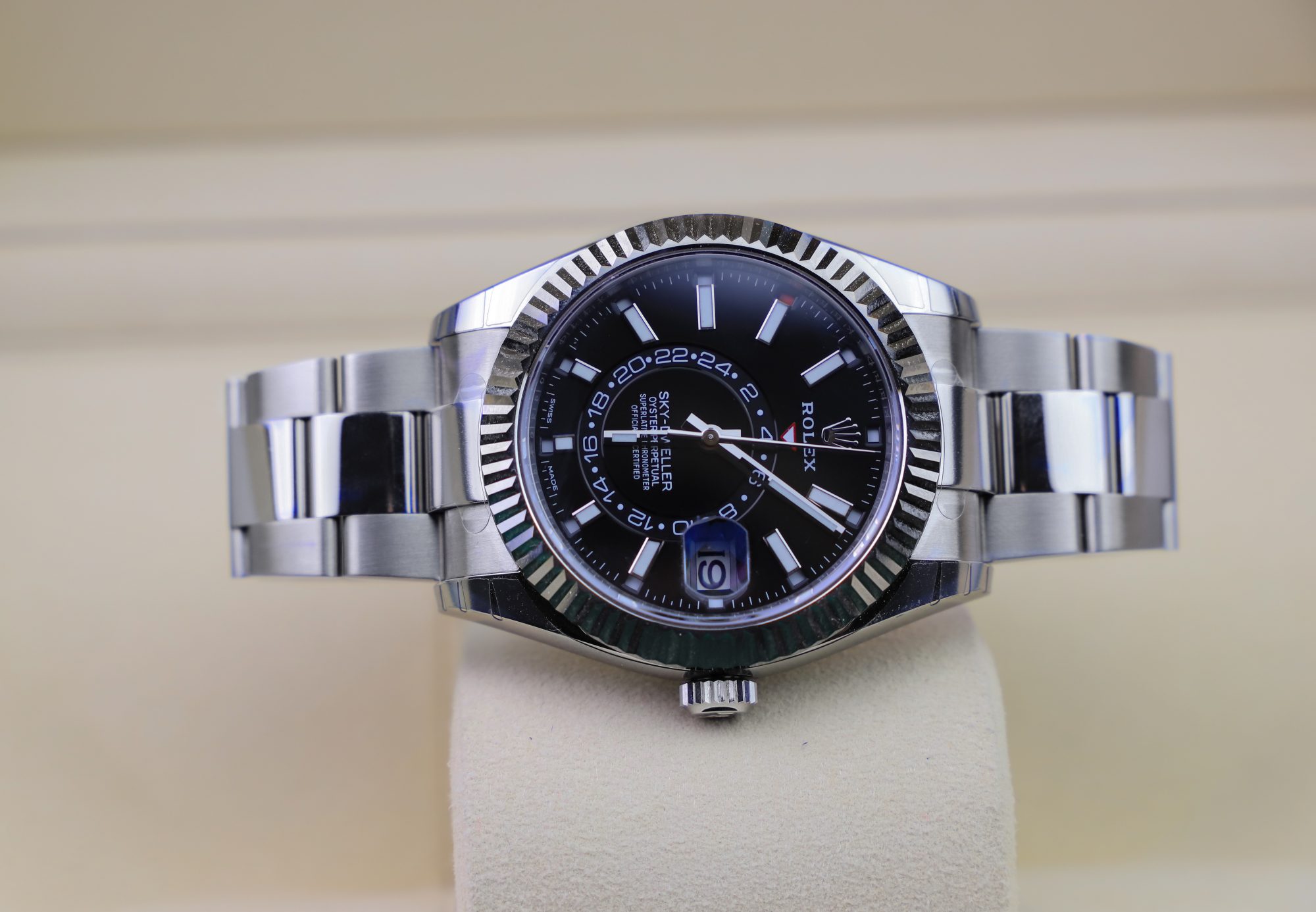
Talking about the caliber, the Sky-Dweller model is equipped with the in-house Caliber 9001. As you understand, Rolex had no reason to change the caliber with the introduction of the stainless steel version, so this has remained the same since 2012.
The Caliber 9001 consists of 380 components garnering it a total of seven patents. The Sky-Dweller, as you have understood, is not your ordinary Rolex watch. It is equipped with impressive technology, and most people are not quite sure how it works technically.
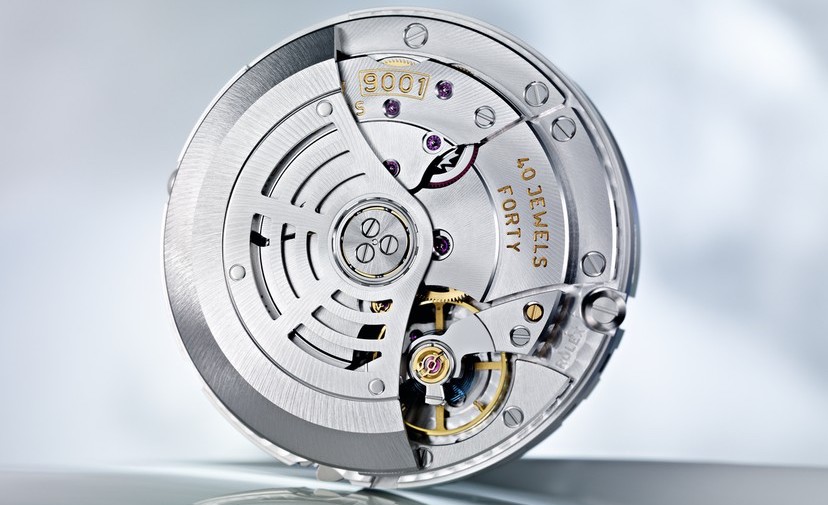
The bezel of the watch is the function selector that is connected directly to the movement and controlled by the winding crown. By rotating the bezel (which does not look rotatable, with its white gold bezel), you can alternate between its three positions and unlock the watch’s various capabilities.
The watch features a dual-time zone, or GMT complication, and an annual calendar. The watch displays the time in two time zones simultaneously, and has an hour hand that can be independently set, forwards or backward, in one-hour jumps. The hour hand is set from the crown and can be re-set to a new timezone without stopping the entire watch.

The complex issue with a calendar in a watch is that the Gregorian calendar has days of varying length – some months have 31 days, and others have only 30. Then there is February, which, depending on whether or not it’s a Leap Year, can be either 28 or 29 days in length (29 in a Leap Year). A perpetual calendar jumps to the first at the end of the month, at the correct date. This means that a perpetual calendar never needs to have the date adjusted manually.

An annual calendar, on the other hand, will know if it is a 30 or 31-day month. But what it does not know is how to jump to March 1 on February 28th or 29th.
Because of this, you need to manually adjust the date of the Sky-Dweller once a year. What is quite impressive is that Rolex’s annual calendar mechanism required the addition of only four wheels to the existing Rolex date mechanism.
The Ring Command Bezel could first be found on the Yachtmaster II, introduced by Rolex in 2007, and similar technology can now be found In the stainless steel Sky-Dweller. Reading the date of the watch is obviously very straightforward. The date can be read by checking the windows above the hour markers; since there are 12 months in a year, you can easily tell what month it is from the position of the red month marker. The 12th month, December is indicated by the position of the red month marker at 12:00.
You can read the home time of the rotating 24-hour ring. The triangle at 12:00 indicates the hour. The benefit of this is that it shows whether it is AM or PM at home.

Using The Ring Command Bezel On The stainless steel Sky-Dweller
Now that you know the functions of the bezel, it’s time to understand how you operate it.
To set the time, you first unscrew the crown and pull it out to the setting position. Then, turn the bezel all the way to the left as far as it will go. Doing this will stop the second hand and engage hand setting, allowing you to set the time.
When you have set the local and home time, you can also change local time by unscrewing the crown and setting the bezel in its second position. You do this by turning it to about 9:30.
This will engage the crown with the setting mechanism for the hour hand alone. This allows you to set it forwards or backward in one-hour increments. When doing this, the date will switch at midnight as well, either forwards or backward.
Turn the bezel again, to the first setting position, about 9:30, and you can set the month and date. Note that the month has no separate quickset, so you need to turn the crown until the red indicator for the month is at the correct window
As demonstrated, it’s very evident that the Sky-Dweller mechanism is very complex. But at the same time, operating it is very straightforward when you have gotten a hang of it. Because of the complexity of the caliber, the Sky-Dweller is actually quite fun and satisfying to operate and adjust.
Rolex Sky-Dweller stainless steel finish, case, and wearability
Now, the Sky-Dweller is unarguably a large watch. The case is 42mm in diameter, but what makes it wear larger than many of Rolex’s other sports watches (apart from the DeepSea Sea-Dweller, of course) is the height. The Sky-Dweller is 14.01mm, and because of its large movement. Its weight also contributes to its wrist presence. The Sky-Dweller in steel weighs 174.6 grams. This can of course not be compared to the full gold Sky-Dwellers which weigh around 400 grams (!).

As you would expect, the Stainless steel Sky-Dweller has a flawless finish. It is robust, feels high-quality, and has no rattling, neither when you operate the bezel or crown or putting on the bracelet. As always, there is nothing to complain about when it comes to finish and quality feel.
The Sky-Dweller in steel is today available with three different dials: white, black sunburst, and blue sunburst. The blue sunburst dial is, not unsurprisingly the most popular of the three, and has a long waiting list at official Rolex retailers. Regardless of the dial version, the reference number is still 326934 since Rolex does not make its reference numbers based on dial colors.
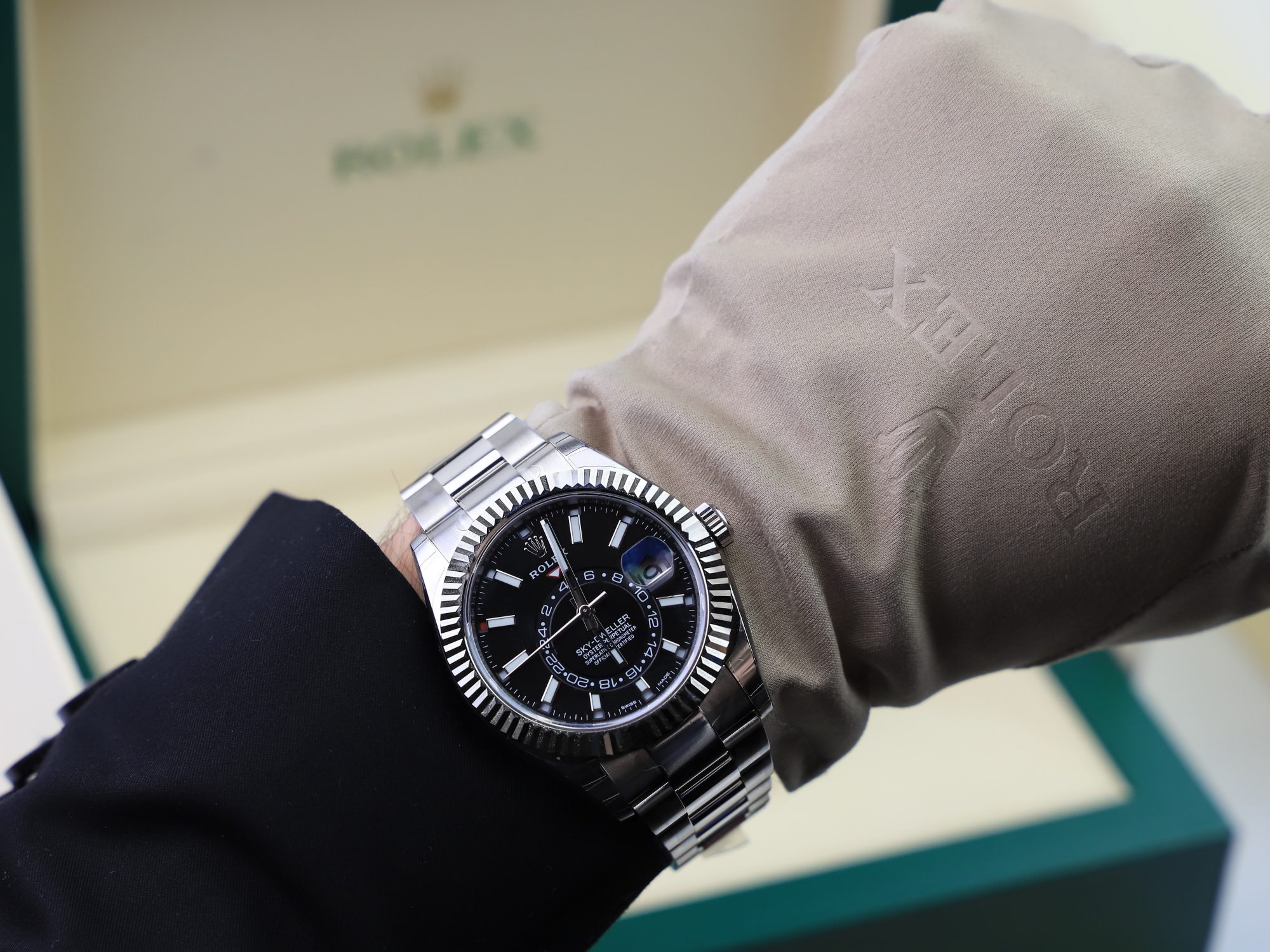
For the stainless steel versions of the Sky-Dweller, the Arabic or Roman numerals used in the precious metal versions have been removed and replaced with plain batons, making the dials more toned down. Furthermore, the GMT disc is also the same color as the dial for all three versions. Rolex also made the stick hands slightly longer for improved legibility.
Just like the Sea-Dweller is a beefed-up version of the Submariner, the Sky-Dweller can, in one way, be seen as the beefed-up version of the GMT-Master II. The Sky-Dweller brought us the first annual calendar from Rolex, and it introduced Rolex’s most complicated caliber today.
What do you think about the Sky-Dweller model? What do you think about Rolex’s decision of making the Sky-Dweller in stainless steel?




